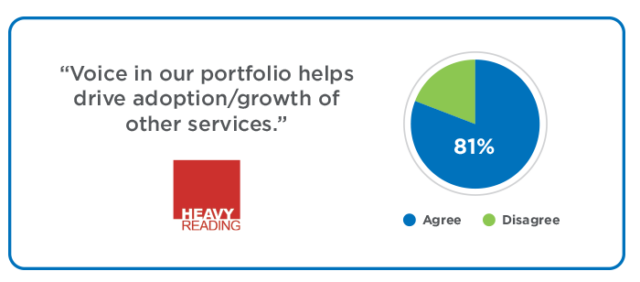The VoIP market in the United States is strong and it’s growing. VoIP subscriptions grew 5% annually according to the latest FCC data. Yes, there’s cord-cutting and wireless-only home phones, but there are still over 60 million residential phone lines, mostly VoIP, in the U.S. Some customers still want a landline and there are good reasons for that.
And there’s still growth ahead with tens of millions of customers that will shift from legacy networks to VoIP solutions. Read more in my blog post The State of Wireline Phone and VoIP in the U.S.
Home Phone Matters
Wait, doesn’t everyone just text and Snapchat today? Well, no.
We’ve heard from our customers that end users report any or all of the following as reasons for choosing home phone service (and special thanks to Elizabeth Jaeger of Eagle Communications for this framework):
- Safety and security– A landline is the best way to call 911. Even if you can’t speak, the dispatcher knows your address and can quickly send help. The location information provided by a mobile phone is not as accurate as the verified address when a home line is activated.
- Dependability – there are plenty of cellular dead zones and areas with spotty reception; the home phone service works and gives customers reliable, crystal-clear communications all the time. And customers don’t have to worry about whether the battery is charged or not
- Privacy – Many people don’t want to broadly share their mobile phone number. A landline is a great alternative number that could be used instead of giving out your cell number. It helps prevent robocalls and auto-dialers from assaulting a customer’s mobile phone.
- Cost savings and feature superiority over legacy copper lines – imagine, there are people still paying for local, long-distance calls and a la carte for features with bills costing over $50 a month. With VoIP, service providers can give customers more convenient features at a better price point and deliver superior value.
- Loss aversion– some people have had a single phone number for decades and family and friends know how to reach them. Sometimes people don’t want to give up that identity.
Our customer Xplornet shares a similar justification for having a home phone on their website: Top 3 reasons why every family needs a home phone line.
There’s innovation that service providers can bring to the home phone too—such as robocall blocking, family attendant, and smart speaker integration. This will help win and retain phone customers.
Voice Has Good Take Rates and Strong Margins
Our customers—cable operators, ISPs, and telcos—see 20-30% of their residential customers subscribe to home phone service. Plus, home phone remains margin-rich at 65% or more, from that revenue stream.
There’s a great stat from a Heavy Reading study a few years ago that also shows why offering phone helps. Eighty-one percent of surveyed service providers said that having voice in their portfolio helps them drive overall adoption of services.

Plus, bundling still works. Leichtman Research has shown that 64% of broadband households go with a bundle. While that stat is not voice specific, it shows that bundles appeal to buyers. Based on our observations, roughly nine of ten new ISPs chose to also bring home phone to market to complement their broadband portfolio.
So there’s great motivation to promote and sell phone service to residential customers.
Your Home Phone Opportunity
After two decades since the VoIP evolution began, the market is still growing despite any total wireline declines. There are 60 million consumer wireline phone lines in the U.S. and 20 million of them are legacy TDM lines! Some of that will churn away, but service providers can capture some of that with value-driven, convenient VoIP services and attractive bundles.
Home phone VoIP remains a lucrative market for service providers; are you maximizing your opportunity?
Contact us if you’d like to launch home phone or improve the solution you deliver to customers.


